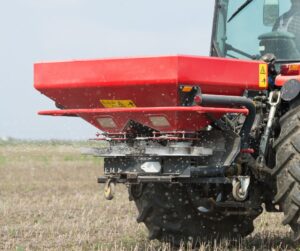 As I look out my window and see the big yellow school bus pass by I’m reminded of another summer winding down and the hope that the hot weather will break and the fall cold fronts will be soon approaching. Back to school represents a change of season. A time of winding down, settling in, and harvesting. For kids that means winding down from summer camps and vacations, settling into new routines, and learning new and exciting concepts. For adults, it’s getting back into the rhythm of school schedules and extracurricular activities. And for those of us without kids it means less congestion on the roads!
As I look out my window and see the big yellow school bus pass by I’m reminded of another summer winding down and the hope that the hot weather will break and the fall cold fronts will be soon approaching. Back to school represents a change of season. A time of winding down, settling in, and harvesting. For kids that means winding down from summer camps and vacations, settling into new routines, and learning new and exciting concepts. For adults, it’s getting back into the rhythm of school schedules and extracurricular activities. And for those of us without kids it means less congestion on the roads!
If you have a lawn, fall means it’s time to get out there and prepare for the winter by applying fall fertilizer. This final application of fertilizer is often skipped by many property owners. Most likely because there is no aesthetic benefit to fall fertilizer and so it may seem like a waste of time and money. But nothing could be further from the truth. In fact, if you were to only fertilize once a year, I would recommend fall fertilizer over spring. Let’s take a look at why fall fertilizer is so essential to a healthy stand of grass and why you may want to rethink its importance.
Unlike in the midwest, Texas soils are not very conducive for growing much of anything, let alone grass. Our soils are comprised mainly of sand, silt, and clay and not much else. With very little in the way of organic material, poor drainage, and high sodium levels, we need all the help we can get when trying to establish (as well as maintain) these grasses. In spring that means adding fertilizer as the grass comes out of its dormant stage and into a growth period. Throughout the growing season, the fertilizer applied in the spring becomes fully utilized. But with regular mowing, the mulched grass will reintroduce nitrogen back into the soil. This helps. But as the growing season slows down, the amount of available nitrogen is reduced simply due to less vegetative material being cut down and mulched back into the soil. If you aren’t mowing at least monthly, this gives you a good reason to start as grasses will grow too long to mulch if left longer than a month between mowings.
Fertilizing in the fall is arguably more important as the high heat and dry conditions of summer are very stressful to turf grasses. By the time fall arrives our Texas grasses have used up all of the spring fertilizer and need some food for winter. But is applying fertilizer in the fall a waste since the grass is going into a dormant stage? What you may not realize is that although no new shoots are growing, the plants are hard at work preparing for next spring. In fact, growth doesn’t actually stop until the ground temperatures get close to freezing. When is the last time you saw this in Texas? A rarity to be sure. The reality is that in the south these grasses never really stop growing. But there’s a difference between sprong growth and fall growth. Nitrogen applied in the spring increases the growth rate of new blades (shoots) and decreases the level of available carbohydrates to the plant, resulting in reduced growth rates in the root zone. Applying this same fertilizer in the fall has no negative effect on root growth. In fact, root growth rates are increased as a result of fall nitrogen applications. It’s this root growth and carbohydrate storage that creates a more stress-tolerant plant. This is especially important when we are talking about slopes.
Detention pond slopes are notoriously problematic simply due to gravity. Everything on the slope is being washed to the pond floor during rain events. This includes food (fertilizer) , which explains why pond slopes degrade rather quickly when grasses are unhealthy. Once the grasses die there are no more roots to hold the soils in place. Adding fall fertilizer to your maintenance schedule is essential to prevent costly pond re-grading and re-seeding. But this is no quick fix. Fertilizing is a process that must be repeated at a minimum twice/yr. to be effective. As the root structures spread deep and wide they will create a matrix of roots and soil that becomes armor against harsh summer heat and drought. In the winter they provide food stores, and when fertilized in the fall, allow the plant to green up in spring 2-6 weeks earlier than if fall fertilizer was not applied. To be effective, fall fertilizer needs to be applied when daily temperatures are cooling off. It would be great if we could apply in 60-degree weather, but that would put us into November. We fertilize in late September or early October which has given us good results in south Texas.
If you haven’t considered fall fertilizer it’s not too late. Contact us today if you have any questions. We’re always here to help. Better yet, try us out with a complimentary site assessment. We will provide a detailed report of our findings and suggestions for improving the health of your detention pond.
